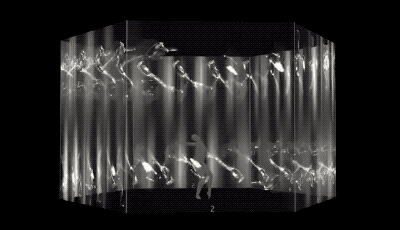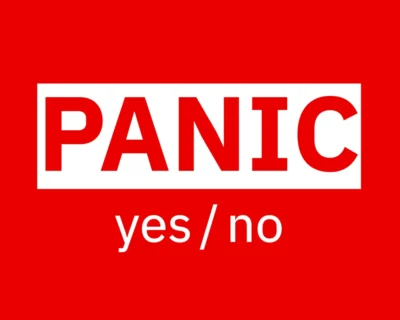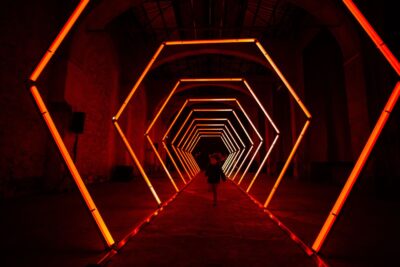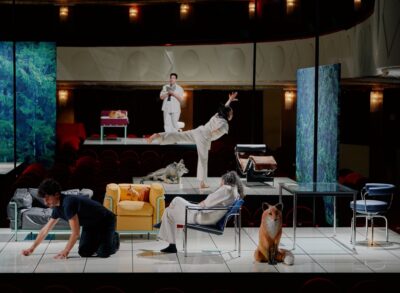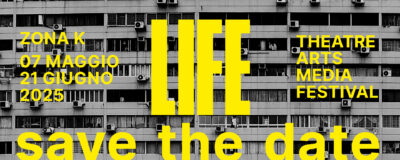Tobias Gremmler : The director (Tim Yip) wanted to tell the story without drawing a too concrete picture. The visuals should trigger the imagination of the audience rather than being consumed. Thus, the visuals appear often incomplete or hiding something that needs to be imagined. For example, the dragon is mostly invisible, covered by smoke. But as its motions become expressed through the turbulences of the smoke, one can imagine the movements behind it. The smoke becomes a medium that abstracts a scene and propagates it wider into space. Similar methods are used with bamboo and stone. This elements serve as media that translates the underlying scenarios.
Every medium has a different degree of intimacy that determines the individual freedom of interpretation. When you read a book, all voices and images appear in your own head. They come to existence through the imagination of the reader. Thus, each character in a book has as many different voices as readers. In cinema, the space for imagination is more constrained, as the voices and visual appearance of the characters are already predefined. Although I am working with a visual medium, I often introduce elements of incompleteness in the sense that it encourages the recipient to complete it with its own imagination.
Chinese theatre particular interests me because there are no gaps between singing, dancing and acting. Most of the performers have skills in all disciplines and can seamless blend between them during a play. In contrast, western theater is strictly divided into opera, dance or drama, and the performers are specialized in one of this disciplines.
When I composed music for theater, being in my early 20s, I got in touch with disciplines such as dance, lighting, costumes and stage design. I learned that each of this disciples has an almost equal impact on the final piece as the expression of a scene can be altered complete just by music or lighting. I was fascinated by this interaction and it had a huge influence of my later work. Even if I mainly focus on visuals now, it still contains aspects of lighting, dancing, costume and stage design
There is a high degree of abstraction in Chinese theater. Every gesture, eye movement, costume color or pattern has a specific meaning, like a highly elaborated system of visual design trough witch information is encoded. As a foreigner, I have a natural distance toward this system which allows me to analyze it from a different perspective, although I found some aspects deeply resonating. There is a universal core in each theatrical expression, independent from its cultural encoding. We all feel happiness, sadness, curiosity or anger. It is just expressed differently through different cultures.
For example, in some of Robert Wilsons works one can trace a relation to Chinese theatre. The methods how information is encoded visually is somehow similar. I am not referring to the visual style but rather the visual language. In my collaborations with Chinese performance, I extract aspects of its visual language and reconstruct its grammar in a way it becomes readable across different cultures without losing its inherent meaning.
https://www.timyipstudio.com/content/article/en/114
from facebook
https://www.facebook.com/tobias.gremmler.7/media_set?set=a.10210858396963721&type=3

